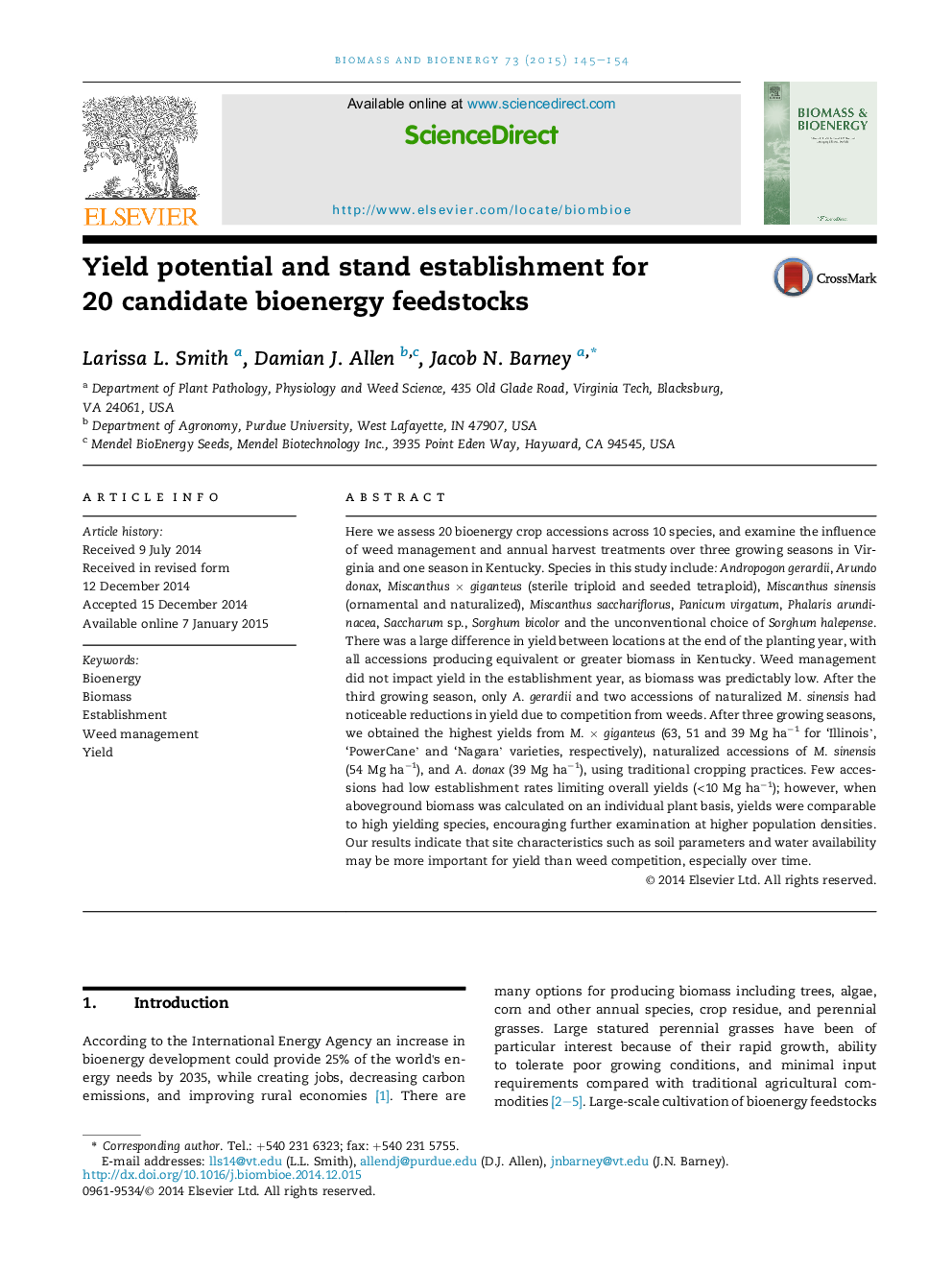| Article ID | Journal | Published Year | Pages | File Type |
|---|---|---|---|---|
| 7064023 | Biomass and Bioenergy | 2015 | 10 Pages |
Abstract
Here we assess 20 bioenergy crop accessions across 10 species, and examine the influence of weed management and annual harvest treatments over three growing seasons in Virginia and one season in Kentucky. Species in this study include: Andropogon gerardii, Arundo donax, Miscanthus Ã giganteus (sterile triploid and seeded tetraploid), Miscanthus sinensis (ornamental and naturalized), Miscanthus sacchariflorus, Panicum virgatum, Phalaris arundinacea, Saccharum sp., Sorghum bicolor and the unconventional choice of Sorghum halepense. There was a large difference in yield between locations at the end of the planting year, with all accessions producing equivalent or greater biomass in Kentucky. Weed management did not impact yield in the establishment year, as biomass was predictably low. After the third growing season, only A. gerardii and two accessions of naturalized M. sinensis had noticeable reductions in yield due to competition from weeds. After three growing seasons, we obtained the highest yields from M. Ã giganteus (63, 51 and 39 Mg haâ1 for 'Illinois', 'PowerCane' and 'Nagara' varieties, respectively), naturalized accessions of M. sinensis (54 Mg haâ1), and A. donax (39 Mg haâ1), using traditional cropping practices. Few accessions had low establishment rates limiting overall yields (<10 Mg haâ1); however, when aboveground biomass was calculated on an individual plant basis, yields were comparable to high yielding species, encouraging further examination at higher population densities. Our results indicate that site characteristics such as soil parameters and water availability may be more important for yield than weed competition, especially over time.
Related Topics
Physical Sciences and Engineering
Chemical Engineering
Process Chemistry and Technology
Authors
Larissa L. Smith, Damian J. Allen, Jacob N. Barney,
